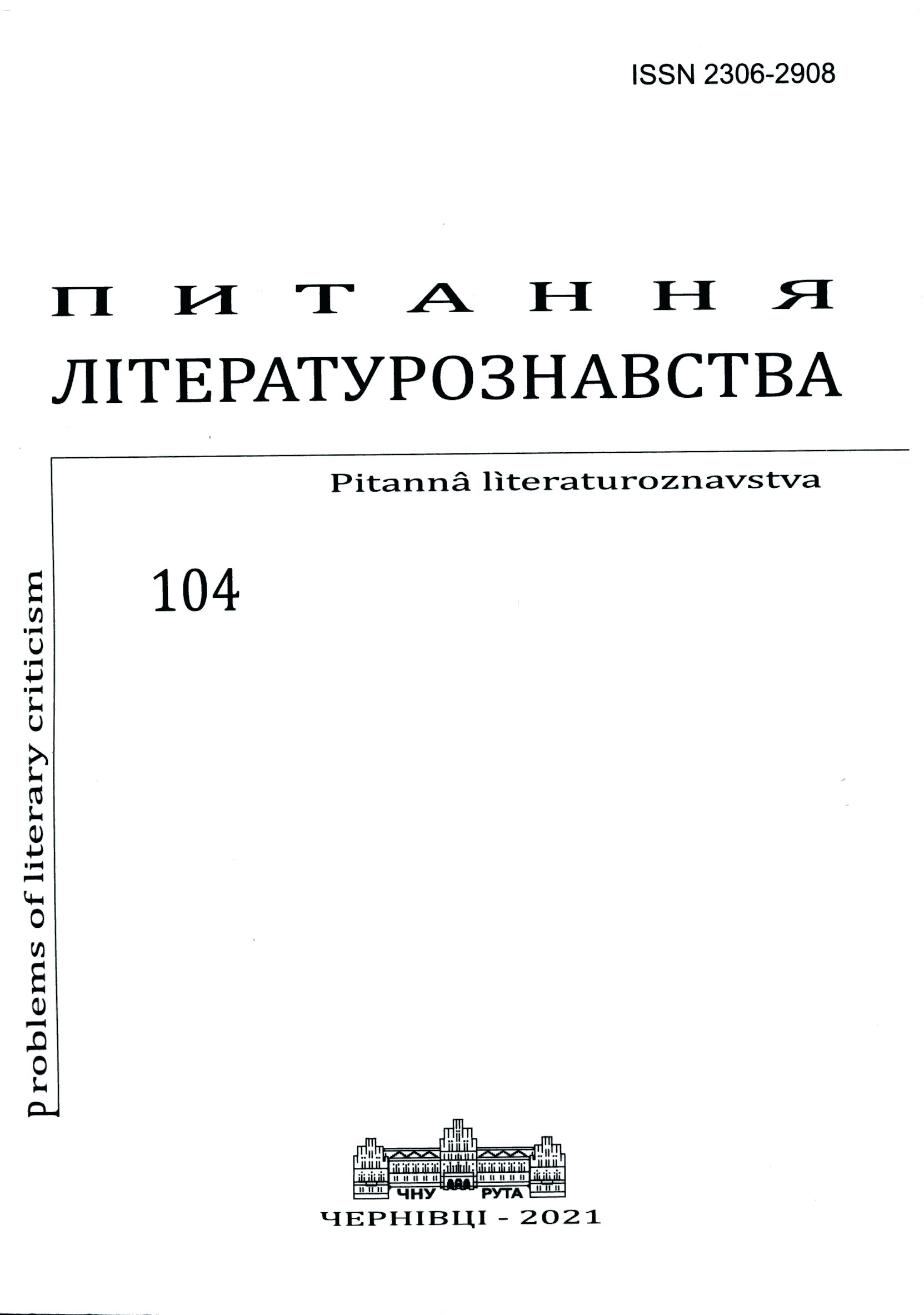Вишивання на канві: версифікаційна майстерність Лесі Українки у віршах циклу „Ритми”
Canvas Embroidery: Lesya Ukrainka’s Versification Skillfulness in the Poems of the Cycle “Rhythms”
Author(s): Borys BunchukSubject(s): Language and Literature Studies, Ukrainian Literature, Theory of Literature
Published by: Чернівецький національний університет імені Юрія Федьковича
Keywords: Lesya Ukrainka; the cycle “Rhythms”; versification; rhythmic scheme; rhythmic means; polymetric construction;
Summary/Abstract: The article under studies deals with the form of Lesya Ukrainka’s poetic works that comprised the verse cycle “Rhythms”. The meaningful unity of the cycle proems has been emphasized by a specifically defined syllable-tonic meter – pentameter iamb, which, however, does not cause the feeling of monotony of the verse form. The purpose of the article is to determine the means, used by the poetess, in order to diversify the structure. The structure of each verse of the cycle is considered separately. The curriculum verse-dialogue “De podilysia vy, holosniyi slova…”, which opens the cycle and develops the theme in the following poems, is extensively analyzed and statistically examined in the aspect of conveying emotions through the verse rhythm. It has been ascertained that the final verses of the cycle (seventh and eighth) differ in the type of the rhythm (“alternated” – “transitive”), the nature of the caesura, the hierarchy of the forms used, the presence or absence of the lines with a different meter, the number of enjambments, and the strophic structure. Thus, despite the fact that the six poems and the second parts of the two polymetric constructions of the cycle “Rhythm” have been written in pentameter iamb, they are far from being similar. Most often, the distinction is in terms of rhythm and syntax. Among the rhythmic means, there prevail the type of the caesura and the forms of the rhythm; then – the percentage of the lines with a different meter, the verses with out-of-scheme stresses and the type of the rhythm; next – the percentage of the stressed feet and the verses with masculine endings. The syntactic means are represented, above all, through enjambments and “sentences-stanzas”, more rarely – through the division into “periods” and anaphors.
Journal: Питання літературознавства
- Issue Year: 2021
- Issue No: 104
- Page Range: 7-27
- Page Count: 21
- Language: Ukrainian

